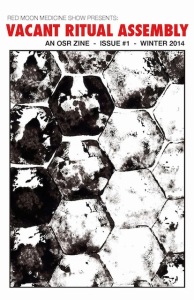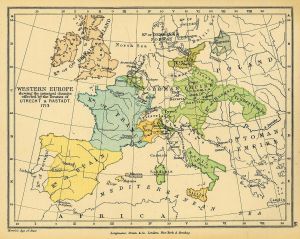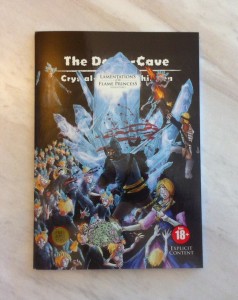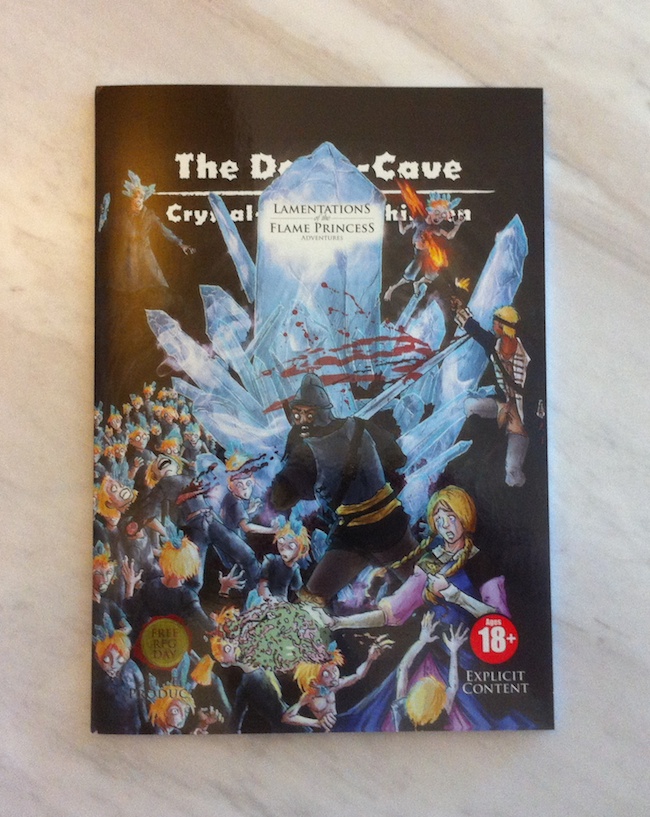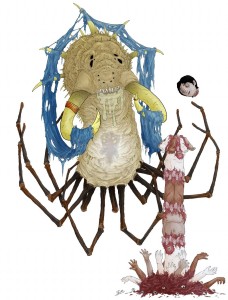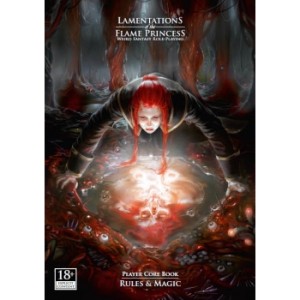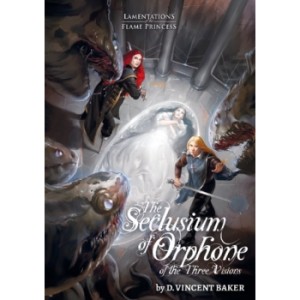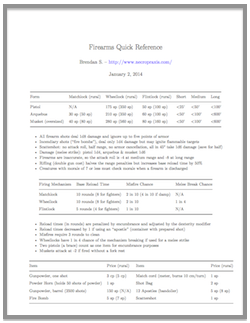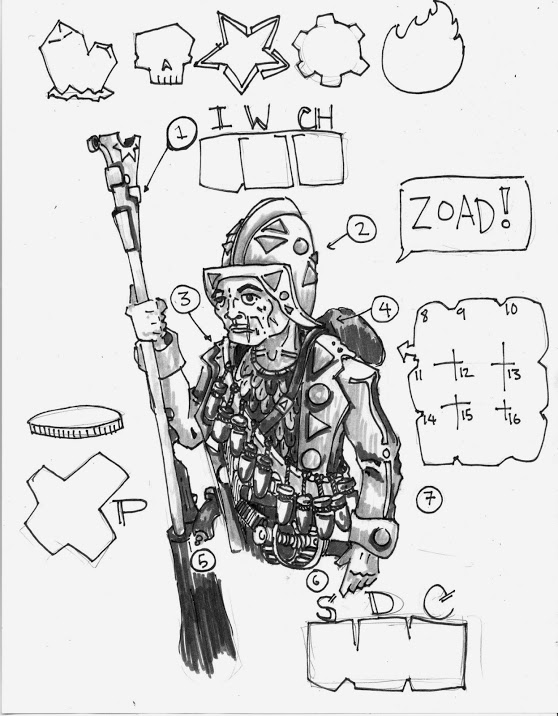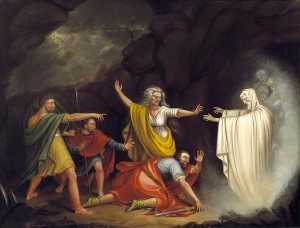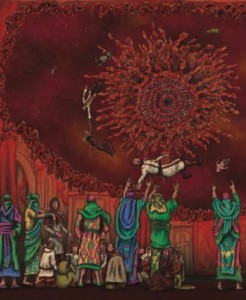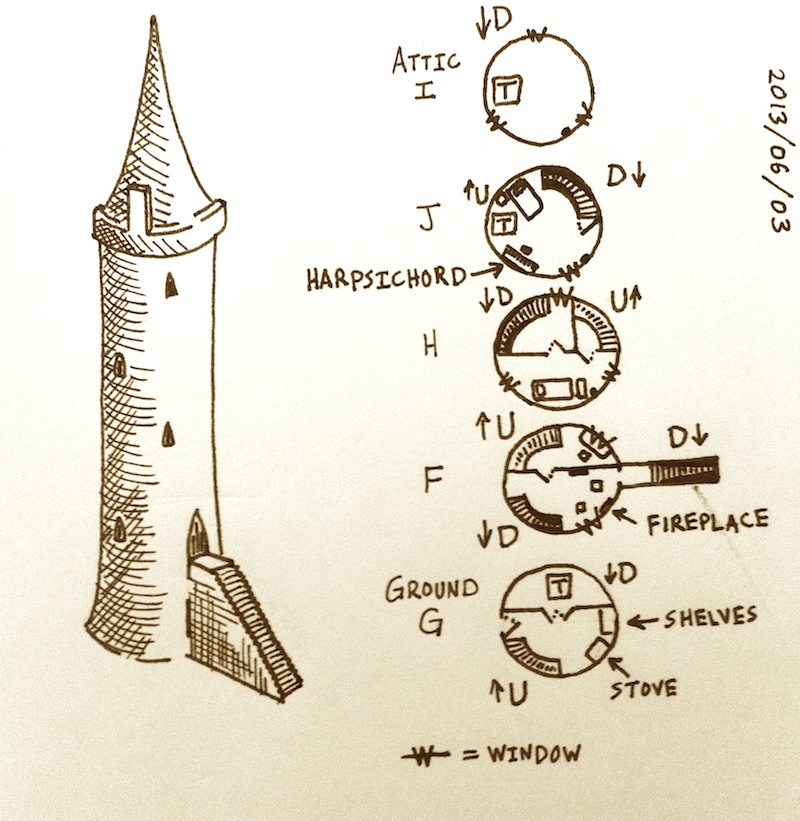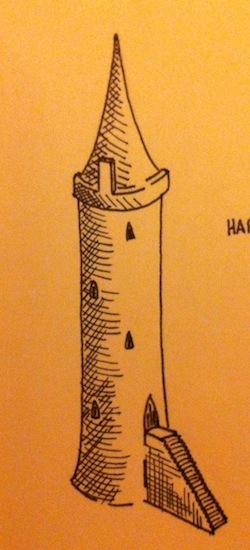The Seclusium of Orphone of the Three Visions (from hereon, “Seclusium”) is a set of tools and procedures to help referees create a wizard’s stronghold.
As the first part of what will probably be a collection of posts on this book amounting to a review of sorts, here’s an example of using chapter 8, which is a magical item generator. The chapter is approximately 15 A5 pages that consist almost entirely of tables and lists. All of these results are interpreted in the light of previously determined facts about the wizard, the stronghold itself, and the circumstances that led to the disappearance of the wizard. I chose to focus on the creation of a magic item first, because I think it shows one of the strengths of the book, which is how the individual components can be used by a referee to help jumpstart content creation.
I’m working on a seclusium that is a collection of islands on a placid expanse of sea that is all columned verandas, richly carved wood, and fluttering silk curtains. Notes in parentheses are my own musings and ideas as I work through the results of the generator, making sense of the juxtapositions.
- Physical object
- Occurring here naturally or by some unknown process
- The wizard has put it into its appointed and proper place
- It is a magical tool, changes the way an adventuring rule applies: searching
- The item protects the seclusium from outside magic
- Its use introduces a minor irritation into the user’s life
- Its use attracts the attention of others beyond the wizard’s control
- To bring its power to bear or to come into contact with its power, the item is to be: displayed
- (Something naturally produced at some place on one of the islands)
- Gives a penalty to the searching rules (some sort of camouflage?)
- It caresses and flatters your plasmic self, like an intimate or treacherous friend
- (Waters of invisibility, “displayed” means washed in, if drunk something else happens)
Okay, what can we do with this? My first thought from “occurring naturally” was that it was some sort of spring that naturally produced a potion. Protecting the seclusium led to a variation on the potion of invisibility (which also fit with a penalty to searching). From previous work, I know that the wizard also has imprisoned enemies within the seclusium, so perhaps an enemy trapped in the spring is the source of the magic. That is enough info to start nailing things down.
There is a spring on one of the islands, within which is trapped Iakkend the Obscure, a wounded and bound sorcerer, and one of the many enemies of Foriophere. The pool is deep but clear, and an observer that peers into it carefully can see an indistinct struggling form chained in the depths. The blood of Iakkend, who is a master of illusion and misdirection, has suffused the spring and granted it magical powers. Any object washed in the waters will become invisible for one day as long as it remains near the sea (slowly fading back into sight over the next several hours). Foriophere has also learned a technique to make the effect last semi-permanently (and this is the source of the invisible structures on the islands), though such use will not be available to PCs unless they discover the required procedure and additional ingredients elsewhere.
The potency of the spring water is limited though, and there is only enough magic for 1d6 applications (which can be either bottling or direct immersion). The water glitters with an opalescent sheen when it is empowered. The magic will slowly seep back into the water Iakkend bleeds (another 1d6 doses will become available after a day passes). Bottled potions of concealment have a limited lifetime, and any older than a few weeks has a 1 in 6 chance of not working.
If the water is drunk rather than used as a wash, the drinker must save versus magic or become a vessel for Iakkend. While so possessed, Iakkend has access to the drinker’s senses, and can speak using the drinkers voice. Further, he may compell the drinker to take actions, though each such attempt allows the drinker another saving throw, and a successful saving throw causes violent retching (expelling the potion) and the termination of all influence from and access by Iakkend. Drinkers also gain the ability to see any concealed, hidden, or invisible objects for the duration of Iakkend’s influence. Thus, though Foriophere uses the power of the spring to hide certain aspects of the seclusium, it also offers a potential foothold for Iakkend to influence the world again, and so is a danger.
This process certainly led to a unique item that I likely would not have come up with on my own or if using a different generator. The result is more involved (in a good way), and situated in the context of the fictional location. It was also, however, not quick, and required time and deliberation to use. It is one of the better magical item generators that I have used, and I will definitely return to it for future inspiration, even outside of creating a wizard’s stronghold. As should be clear from the list above, the many degrees of freedom will likely result in a wide variety of qualities, and there are also many subtables related to magical entities which did not come up here at all because they were not relevant to this particular item.
In addition to tables that help you create magical items, the way Seclusium presents special abilities is interesting. The point of magic is that it lets you break the rules. That is the role of magic within the game; the ESP spell, for example, in OD&D, is presented as basically a super-reliable way to listen at doors. It is worth keeping this in mind when designing magical items. What part of the rules does the item interact with? You will recall that the generator result told me that the item modified how the character interacted with the searching rules, and applied a penalty (which I interpreted liberally). Thinking about rules interface directly in this way guarantees that the item will have relevance to adventuring.
The book is not without its flaws, which I will touch on more in future posts, but hopefully this should give some idea about the style and potential value of Seclusium. The hardcopy can be purchased from the LotFP store, and the PDF is also available (sans watermarks, happily) from RPGNow.

